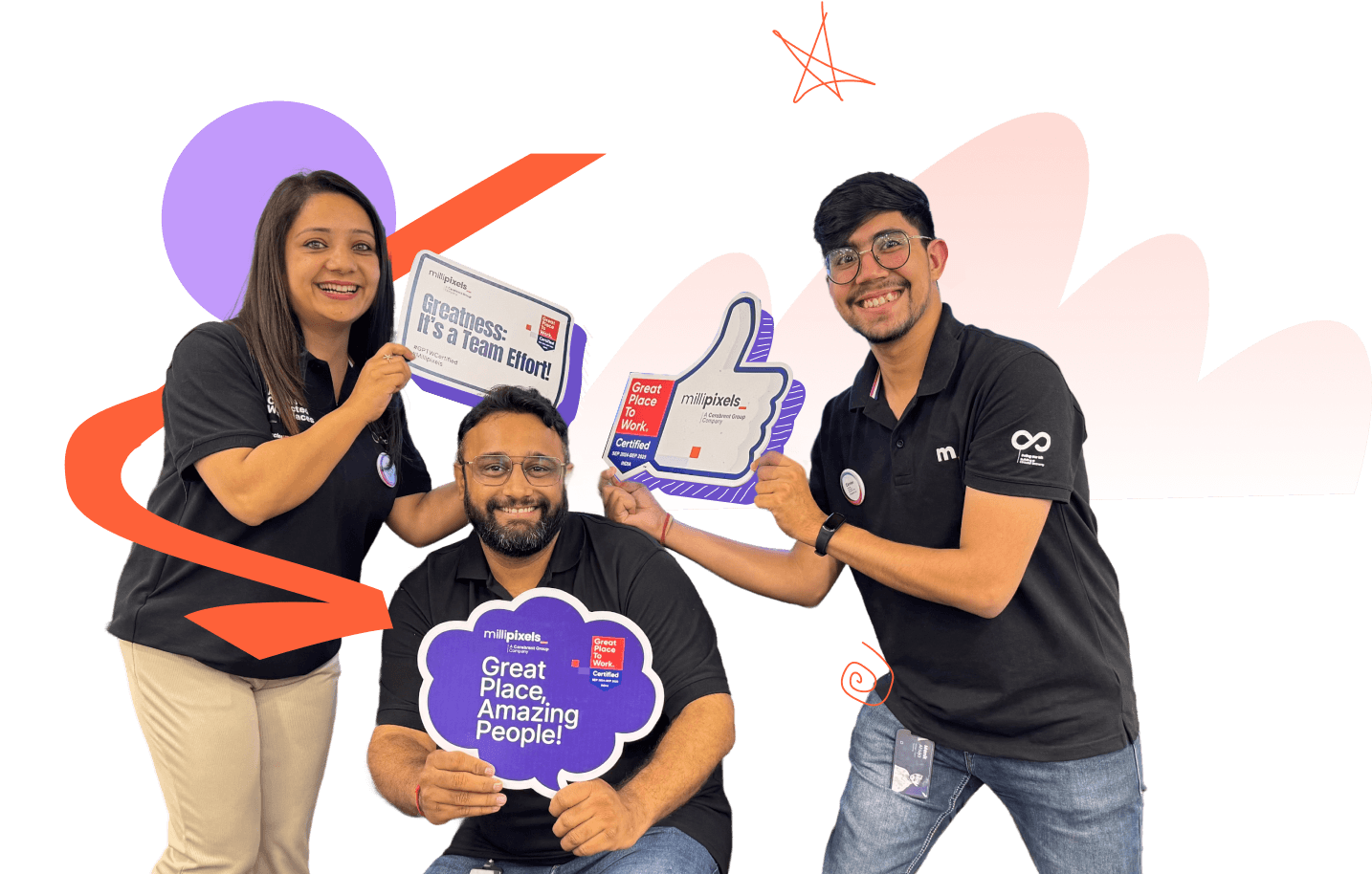Blog
5 Best Intelligent Software Solutions to Skyrocket ROI by 471% (+Step by Step Integration)
Boost ROI with 5 intelligent software solutions using custom application development and tailored software solutions.
October 28, 2025

Introduction
You’ve probably noticed this businesses spend thousands (sometimes millions) on software every year, yet few actually see measurable returns. The problem isn’t the lack of technology; it’s the lack of intelligence behind it.
That’s where Intelligent Software Solutions come in. These aren’t your typical plug-and-play systems. They’re adaptive, data-driven, and tailored to how your business truly operates. They don’t just automate tasks they understand them, optimize them, and scale them efficiently.
Whether you’re running a growing startup or a large enterprise, integrating custom software solutions for businesses is now one of the most effective ways to turn technology into profit. Let’s explore how the right custom application development services and a few strategic integrations can help you skyrocket your ROI by as much as 471 percent.
The ROI Problem in Traditional Software Deployment
Here’s the truth most businesses overlook: traditional off-the-shelf tools are built for everyone, which means they’re rarely perfect for you.
They might look appealing at first, quick to deploy, easy to set up, but under the surface, they create a web of hidden inefficiencies. You spend hours every week exporting reports between tools that refuse to sync. Your teams manually update data because automation doesn’t fit your workflows. You’re paying for licenses you barely use because the system can’t adapt to your specific business model.
In most cases, these inefficiencies go unnoticed until you start measuring ROI and realize that the software meant to save time is actually draining resources.
This is where custom application development becomes a real differentiator. Instead of adjusting your operations to fit generic software, you design tools that fit how you work. Whether it’s custom business application development for better process alignment or custom web application development for a smoother digital experience, the impact is tangible:
- faster operations
- reduced errors
- clearer decision-making
Five Intelligent Software Solutions That Actually Deliver Results
Let’s get specific. You’ve probably heard that “AI can automate everything” or that “low-code is the future.” But the truth is, not all intelligent software solutions are equal and not all automation creates ROI.
The real winners are the tools that make your business think faster, decide faster, and adapt faster. These five categories are doing exactly that.
1. Predictive Enterprise Application Development That Thinks Before You Do
Most businesses are reactive. They notice inefficiencies only when they start costing money or disrupting operations. Predictive systems turn that model on its head.
By integrating predictive analytics into enterprise application development, you can forecast operational slowdowns, supply chain issues, and performance dips before they occur. Custom enterprise application development allows you to design systems that learn from your own data rather than relying on generic benchmarks. For example, predictive dashboards can flag declining conversion rates before they impact quarterly revenue or detect underperforming branches before losses accumulate.
This is not about tracking what has already happened but about seeing what will happen next. When you shift from reacting to anticipating, you save enormous amounts of time, money, and focus that would otherwise be lost to damage control.
2. Low Code Custom Application Development for Real-Time Adaptability
Speed used to be the advantage of low-code platforms, but now, adaptability is what defines their value. With low code custom application development, you can respond to market changes in days rather than quarters.
Imagine a marketing team creating and launching an internal analytics dashboard in a week or a sales department testing a new customer portal before the next product cycle. Custom application development services ensure that even these rapid builds adhere to enterprise-grade security and scalability standards. The real power lies in iteration: you can prototype, deploy, learn, and refine without disrupting core operations.
Low-code solutions are not shortcuts; they are intelligent accelerators that make experimentation safe and scalable, which is critical for survival in markets that shift faster than your release cycles.
3. Intelligent Workflow Automation That Starts Where It Hurts Most
Most automation fails because it begins at the top level of management instead of where inefficiencies actually occur. Real ROI comes from automating micro-decisions at the team level through custom business application development.
Start by mapping your daily friction points—approvals, escalations, customer queries, or compliance checks. Then use intelligent triggers to automate these micro-workflows with precision. Instead of an employee manually updating every approval, the system can make that decision instantly based on real-time parameters.
When automation mirrors how your teams naturally operate, adoption rises sharply. The technology becomes invisible, and your workforce stops thinking about the software and starts thinking about strategy. Intelligent automation is not about replacing humans; it is about removing the friction that slows them down.

4. Tailored Software Solutions That Unite Platforms and People
Modern businesses often operate across multiple platforms—desktop, web, and mobile—and that creates invisible silos that slow down collaboration. Data becomes trapped in isolated tools, forcing employees to repeat work or manually transfer information.
Tailored Software Solutions built through custom desktop application development and custom web application development eliminate these gaps. When every tool speaks the same digital language, you create a connected ecosystem where information flows seamlessly. For instance, your CRM can automatically update your analytics dashboard or sync with your project management system in real time.
The result is not just improved communication but operational intelligence. Your teams make better decisions because their tools already did the heavy lifting of coordination. This is what real integration looks like technology that disappears into your workflow instead of interrupting it.
5. Adaptive Analytics and Decision Support That Learn as You Grow
Most businesses drown in data because they collect more than they can interpret. The solution is not to track more metrics but to track smarter ones. With custom application development, you can design adaptive analytics systems that learn from your company’s behavior.
Instead of just showing a sales dip, these systems can reveal which product categories or marketing touchpoints caused it. They can forecast cash flow fluctuations based on historical data, customer churn risk, or even employee productivity trends. This turns raw numbers into actionable foresight.
Over time, adaptive analytics evolve with your business, giving you a competitive advantage that compounds. You are not reacting to yesterday’s data but shaping tomorrow’s strategy with precision.
If all this sounds complex, it isn’t. What makes these intelligent software solutions powerful is not the technology itself but the clarity they create. And that clarity is exactly what Clarient specializes in.
With expertise in custom application development and tailored software solutions, Clarient helps businesses move from fragmented tools to unified intelligence that actually drives ROI. When clarity meets capability, your technology stops being an expense and becomes your most consistent source of growth.

Step-by-Step ROI-First Implementation Framework
Now that you know what works, it’s time to turn those ideas into measurable ROI. Most businesses fail not because they choose the wrong tools, but because they integrate them without a clear, results-oriented framework. Following this approach ensures that every software decision directly impacts your bottom line.
1. Audit for Friction, Not Just Failures
Start by identifying what slows your business down, not just what is broken. Look at repetitive approval loops, data handoffs between departments, and manual tracking steps that could be automated. Most audits focus on costs, but the real ROI opportunities lie in time, effort, and workflow dependencies. By mapping these friction points, you reveal the hidden productivity leaks that traditional spreadsheets or reports never show. This is where custom application development services begin to pay for themselves.
2. Rank ROI Leverage Points, Not Pain Points
High-impact transformations don’t always address the loudest pain points. Focus on areas where small improvements multiply results. For example, automating a standard report might save hours, but automating quote generation or inventory forecasting can directly boost revenue. Use the lens: “If this process were twice as fast or accurate, would our revenue or efficiency improve significantly?” Processes that pass this test become your first targets for custom business application development and custom enterprise application development.
3. Match Each Tool to a Measurable Business Goal
Every intelligent software solution you implement must move at least one key metric. If you cannot define that metric, the tool is not ready for integration. Whether you are using Low Code Custom Application Development for rapid deployment or predictive enterprise analytics for decision support, tie each solution to a measurable outcome such as time-to-market, error reduction, lead conversion, or operational efficiency. This keeps your adoption focused and prevents technology from becoming a costly distraction.
4. Pilot Small, Train Deep
Pilots are precision experiments, not beta tests. Launch each new solution in a single department with one clearly defined KPI. Track results rigorously before expanding. Training is equally critical. Teams fail to adopt even the smartest tools when they do not understand why it matters. By piloting with focused training, you build internal champions who accelerate adoption and create a culture where intelligent automation becomes part of daily operations.
5. Scale What Works, Abandon What Doesn’t
Most companies waste months tweaking underperforming tools. The smarter approach is aggressive pruning. If a solution does not deliver measurable ROI within 90 days, replace it rather than endlessly iterating. Double down on solutions that show clear results and standardize them across the organization. This method transforms fragmented digital systems into fully Tailored Software Solutions that consistently drive profitability and operational intelligence.
Quantifiable Benefits Beyond ROI
While ROI is the obvious target, the benefits of custom application development extend far beyond financial returns. Here’s how:
- Higher Employee Productivity: Custom software automates repetitive tasks, allowing employees to focus on more strategic activities. A study found that automation can increase employee productivity by up to 30%.
- Greater Customer Satisfaction: Tailored solutions enhance user experience, leading to improved customer satisfaction scores. Companies that implement custom software often see a significant increase in their CSAT scores. Userpilot
- Shorter Project Timelines: Custom tools streamline workflows, reducing project timelines. On average, custom software development can cut project delivery times by 20–30%. Full Scale
- Stronger Data Security: Custom applications can be designed with robust security measures, reducing vulnerabilities. Implementing custom software has been shown to decrease data breach incidents by up to 40%.
- Better Collaboration Between Teams: Integrated custom solutions improve communication and collaboration across departments. Teams using custom software report a 25% improvement in collaboration efficiency.
Custom software solutions evolve with your needs, ensuring you're not stuck with outdated technology as your company grows.
Future-Proof Your Business with Next-Gen Software Trends
Staying ahead in today’s digital landscape means watching enterprise application development trends closely. Here’s what’s reshaping the future of software in 2025 and beyond:
AI-Powered Automation: AI is no longer a luxury; it’s becoming standard across industries, helping businesses streamline operations and make smarter decisions.
Low-Code and No-Code Tools: These platforms enable non-technical teams to innovate faster, develop internal tools, and respond to business challenges without relying entirely on developers.
Cloud-Native Systems: Cloud-native architectures reduce infrastructure complexity, improve scalability, and allow businesses to deploy solutions faster and more reliably.
Predictive Analytics: Predictive systems help enterprises anticipate problems before they occur, enabling proactive decision-making across operations, sales, and customer experience.
Adopting these trends early positions your company not just as efficient but as a market leader ready for future challenges.
Conclusion: Turning Intelligent Software Solutions into a Strategic Advantage
How intelligently you use software determines how quickly your business grows. Intelligent software solutions are no longer a luxury. They are a necessity for any organization aiming for consistent ROI and operational excellence.
By adopting custom application development, Tailored Software Solutions, and enterprise-grade integrations, you are not just optimizing processes. You are building a smarter, faster, more adaptive business. Start small. Pick one area. Apply the framework. Watch the numbers shift.
With the right strategy, your software does not just support your business. It propels it forward. Clarient can help you implement these intelligent solutions seamlessly, ensuring every tool you adopt drives measurable growth and operational clarity.
Frequently Asked Questions
1. What is custom application development and how can it drive business growth in 2025?
Custom application development is the process of creating software that is specifically designed for your business needs rather than relying on generic off-the-shelf solutions. By investing in custom application development services, you can streamline processes, automate repetitive tasks, and integrate systems in a way that fits your unique workflows. In 2025, businesses using custom business application development are seeing faster decision-making, higher employee productivity, and stronger customer experiences because the software grows with their needs. Tailoring your tools ensures you’re not just keeping up with competitors but actually outpacing them.
2. How do custom enterprise application development and tailored software solutions improve efficiency and scalability?
Custom enterprise application development and Tailored Software Solutions allow businesses to centralize operations and create a single source of truth across departments. For example, integrating a custom web application development platform with a custom desktop application development system ensures that data flows seamlessly between remote and on-site teams. This reduces manual errors, accelerates workflows, and scales with your business as it grows. Essentially, your software adapts to your processes, not the other way around, giving you efficiency gains that traditional off-the-shelf tools simply cannot match.
3. Why should businesses choose low-code custom application development for faster and smarter software solutions?
Low Code Custom Application Development empowers businesses to build and deploy applications faster without compromising quality. You don’t need large developer teams to iterate on internal tools, dashboards, or workflow automations. When paired with custom application development services, low-code platforms allow you to implement AI, analytics, and integrations while maintaining enterprise-level reliability. This means your business can respond to market changes quickly, experiment safely, and scale smarter.
4. What are the key differences between custom web application development and custom desktop application development?
Custom web application development focuses on building tools that run in browsers, are accessible from anywhere, and integrate easily with cloud services. They’re ideal for real-time collaboration and mobile teams. Custom desktop application development, on the other hand, is designed for performance-intensive tasks, offline work, and environments that require deeper system integration. Both approaches can be part of Enterprise Application Development, and choosing the right combination depends on your operational needs and the scale of your business.
5. What are the best practices for successful custom application development projects in 2025?
Successful projects follow Application Development Best Practices. Start by defining clear business goals and measurable KPIs for your software. Conduct a detailed audit to understand workflow bottlenecks and ROI opportunities. Choose the right type of solution, whether it’s custom software solutions for businesses, custom business application development, or Tailored Software Solutions. Pilot the solution in a controlled environment, train your teams thoroughly, and iterate based on real data. Staying aligned with Enterprise Application Development Trends ensures your software remains scalable, secure, and future-ready, maximizing the Benefits of Custom Application Development for your organization.

Parthsarathy Sharma
B2B Content Writer & Strategist with 3+ years of experience, helping mid-to-large enterprises craft compelling narratives that drive engagement and growth.
A voracious reader who thrives on industry trends and storytelling that makes an impact.
Share
Are you seeking an exciting role that will challenge and inspire you?

GET IN TOUCH